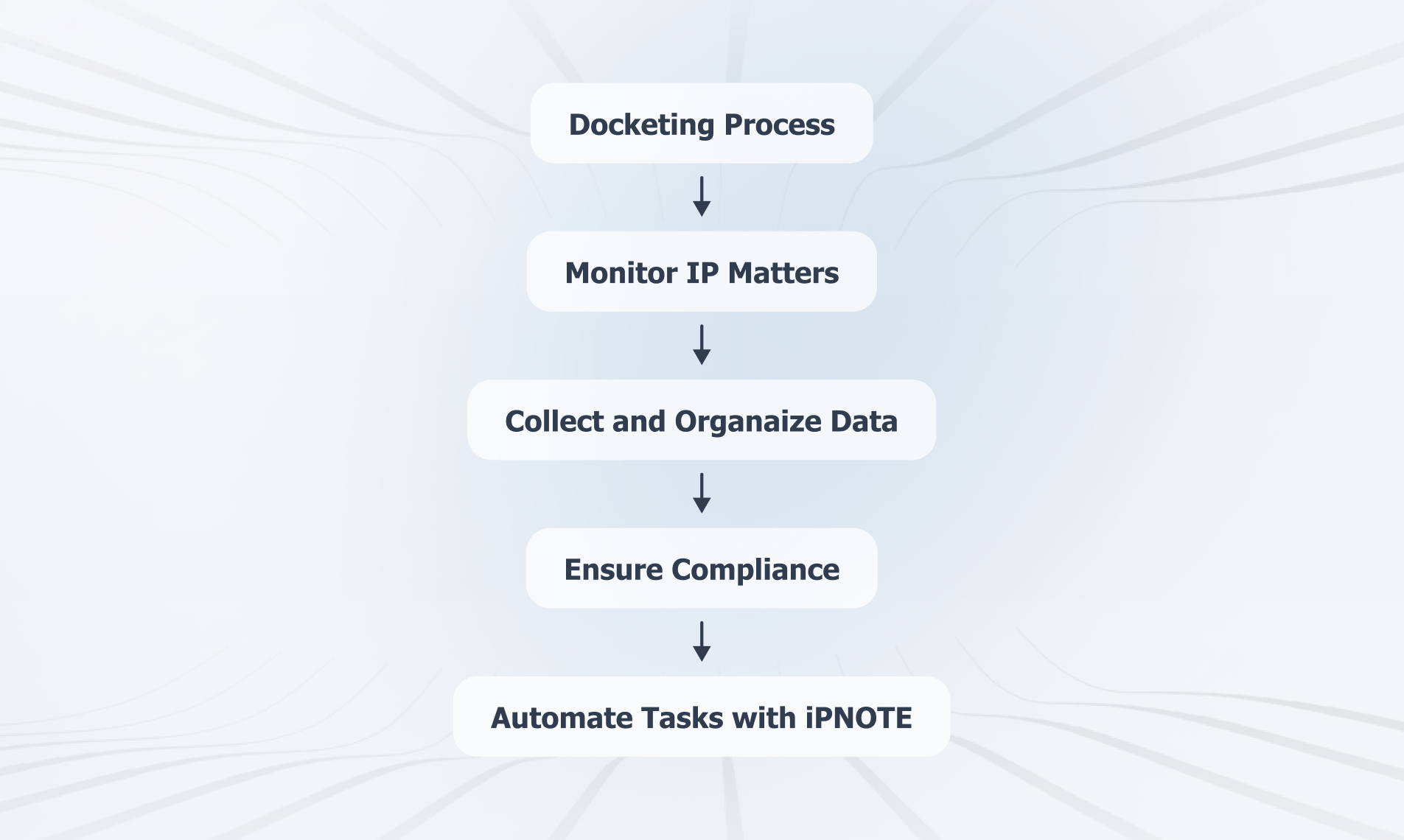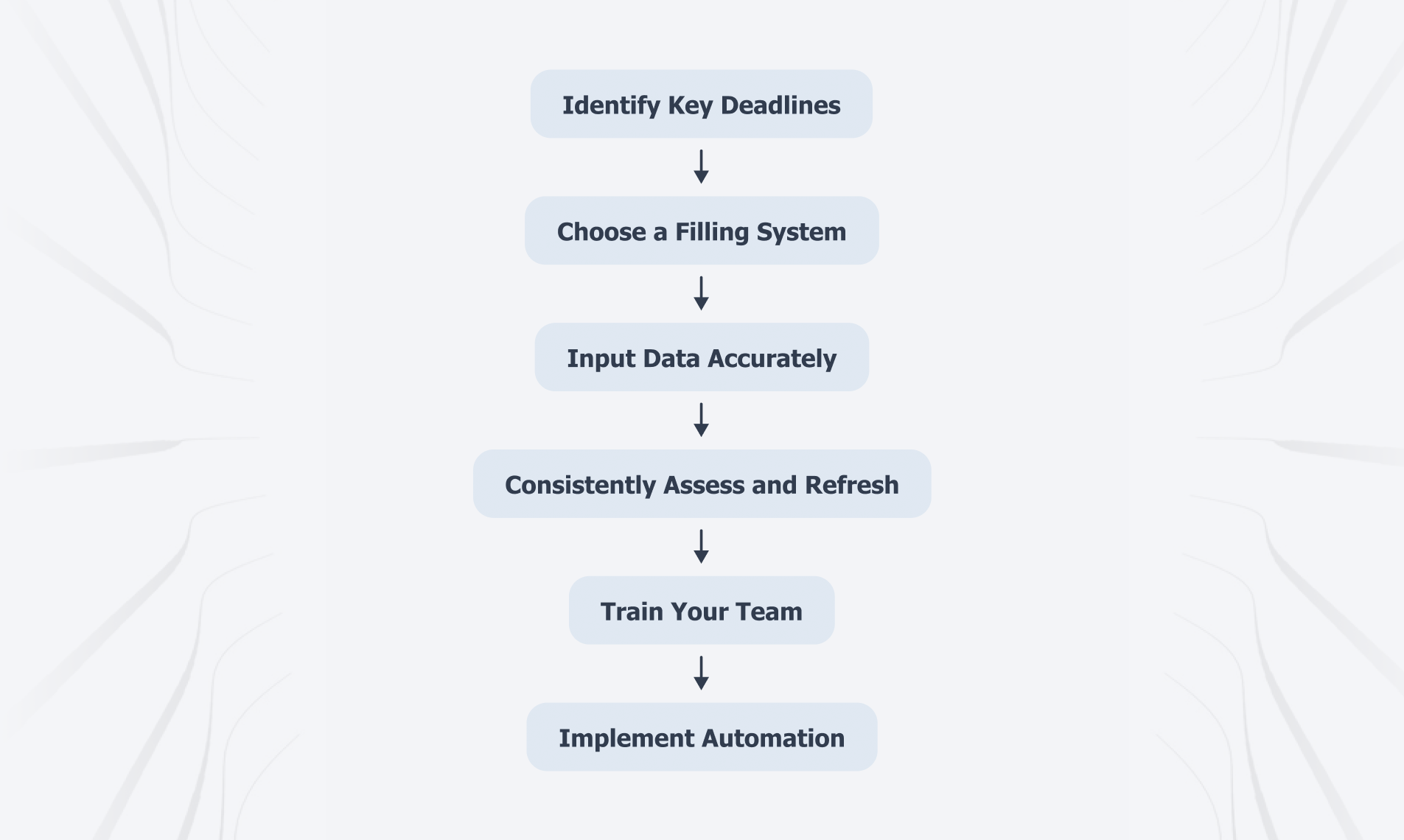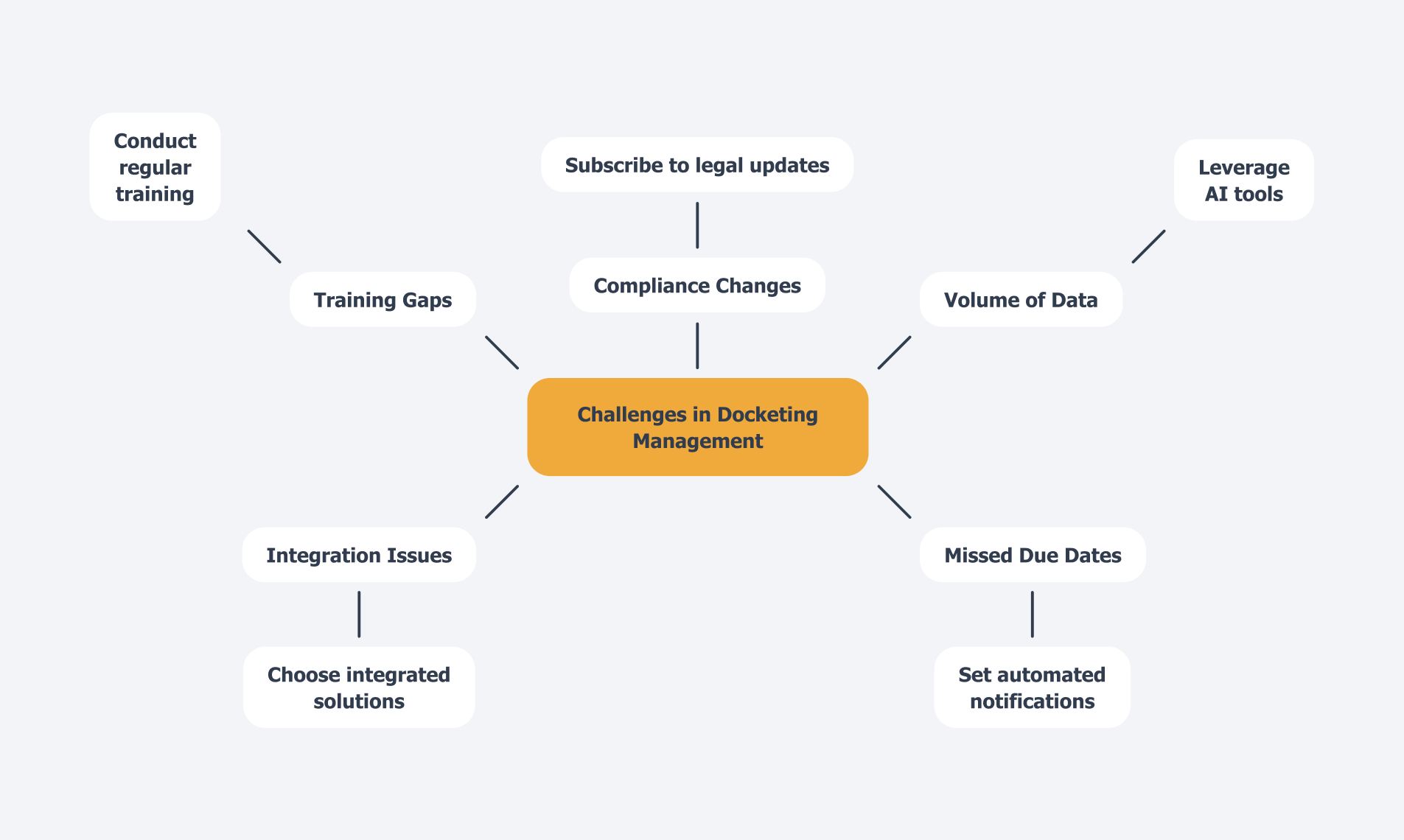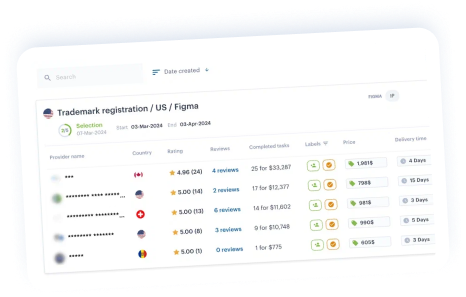Overview
Docketing in intellectual property management represents a systematic approach to tracking and managing critical timelines associated with IP matters, thereby ensuring compliance and safeguarding IP rights. This article delineates essential steps for effective docketing, including:
- The identification of key deadlines
- The utilization of automated systems
- The resolution of common challenges
These measures are designed to enhance efficiency and accuracy in IP operations, ultimately benefiting the management of intellectual property.
Introduction
In the intricate realm of intellectual property management, effective docketing stands out as an essential pillar for the protection of valuable assets. This systematic approach not only monitors critical deadlines for patents, trademarks, and copyrights but also ensures adherence to the ever-evolving legal landscape.
As organizations grapple with the formidable challenge of managing extensive data, innovative solutions such as iPNOTE provide streamlined automation and collaborative tools, empowering IP professionals to navigate their portfolios with assuredness.
By mastering the nuances of docketing, teams can significantly mitigate risks and circumvent pitfalls that jeopardize their intellectual property rights.
Understand Docketing in Intellectual Property Management
To define docketing in the context of intellectual property management, it represents a crucial procedure for monitoring and overseeing timelines associated with various IP matters, such as patents, trademarks, and copyrights. This organized approach encompasses the collection, organization, and oversight of essential data, ensuring that all necessary actions are executed within specified time frames. To define docketing, it is essential for maintaining compliance with legal requirements and safeguarding valuable IP rights.
With iPNOTE’s AI-driven features, corporate IP managers can automate the creation of tasks and reminders, effectively eliminating routine processes and ensuring that no deadlines are overlooked. Furthermore, iPNOTE offers swift access to your intellectual property portfolio, while its streamlined collaboration tools enhance communication among internal and external stakeholders, significantly improving the management of trademark, patent, and design registrations.
By understanding the intricacies of case management and leveraging iPNOTE’s innovative solutions, IP professionals can adeptly manage their portfolios and avert pitfalls that could jeopardize their assets.

Follow Essential Steps for Effective Docketing
To create an efficient scheduling system, follow these essential steps:
- Identify Key Deadlines: Begin by mapping out all critical deadlines associated with your IP assets, including filing dates, renewal dates, and response deadlines.
- Choose a Filing System: Select a dependable filing software that meets your organization’s requirements. Look for features like automated reminders, integration with iPNOTE’s AI-driven IP management platform, and user-friendly interfaces that facilitate streamlined role-based access control, while also eliminating routine processes.
- Input Data Accurately: Ensure that all pertinent information is entered into the record-keeping platform accurately. This includes application numbers, filing dates, and any correspondence related to the IP assets.
- Consistently Assess and Refresh: Arrange frequent evaluations of your scheduling framework to ensure that all time limits are up-to-date and that any modifications in IP law or regulations are incorporated. This will also provide quick access to your IP portfolio.
- Train your team by providing training on how to effectively define docketing within the system, minimizing errors and ensuring everyone is aligned on deadlines and procedures.
- Implement Automation: Utilize automation features in iPNOTE’s platform to streamline repetitive tasks, such as sending reminders, creating tasks, and generating reports. This can significantly lessen the workload and enhance accuracy, enabling more effective handling of fee payments and renewals.

Overcome Challenges in Docketing Management
Docketing management poses several significant challenges; however, the right strategies can effectively address these issues:
- Volume of Data: The management of large volumes of IP data can be overwhelming. To combat this, consider leveraging AI-driven tools that automate data entry and analysis, thereby reducing the manual workload.
- Missed Due Dates: Overlooking essential due dates represents a substantial threat in scheduling. To mitigate this risk, establish automated notifications and alerts within your scheduling platform to ensure that no deadlines are overlooked.
- Integration Issues: Often, filing tools fail to connect effectively with other IP management applications. It is advisable to select a scheduling solution that offers seamless integration with your existing systems to enhance workflows.
- Training Gaps: Insufficient training can lead to errors in record-keeping. Regular training sessions and updates on best practices are essential to keep your team informed and proficient in using the filing system.
- Compliance Changes: The landscape of IP laws and regulations is subject to frequent changes. To remain compliant, subscribe to relevant legal updates and integrate these changes to define docketing practices.
By addressing these challenges with the recommended strategies, you can enhance your ability to define docketing management processes and ensure greater efficiency in your intellectual property operations.

Conclusion
The significance of effective docketing in intellectual property management cannot be overstated. By systematically tracking and managing deadlines for patents, trademarks, and copyrights, organizations can safeguard their valuable assets while ensuring compliance with evolving legal requirements. The integration of innovative solutions like iPNOTE enhances this process, offering automation and collaborative tools that empower IP professionals to manage their portfolios with confidence.
Establishing a robust docketing system involves the following steps:
- Identifying key deadlines
- Selecting suitable software
- Ensuring accurate data input
Regular reviews and team training are essential to maintain the system’s effectiveness. Moreover, the implementation of automation features can drastically reduce manual workloads, allowing teams to focus on strategic IP management rather than routine tasks.
While challenges such as data volume, missed deadlines, and compliance changes can arise, they can be effectively managed with the right strategies. By leveraging AI-driven tools and fostering a culture of continuous learning, organizations can navigate the complexities of docketing with ease. Ultimately, mastering the art of docketing is a critical step in protecting intellectual property rights and ensuring long-term success in an increasingly competitive landscape.
Master Your IP Management with iPNOTE’s AI Solutions.
Start now to streamline your docketing process and protect your valuable assets effortlessly.
Frequently Asked Questions
What is docketing in the context of intellectual property management?
Docketing refers to the crucial procedure for monitoring and overseeing timelines associated with various intellectual property matters, such as patents, trademarks, and copyrights. It involves the collection, organization, and oversight of essential data to ensure necessary actions are executed within specified time frames.
Why is docketing important for intellectual property management?
Docketing is essential for maintaining compliance with legal requirements and safeguarding valuable intellectual property rights.
How can iPNOTE assist with the docketing process?
iPNOTE offers AI-driven features that automate the creation of tasks and reminders, helping corporate IP managers eliminate routine processes and ensure that no deadlines are overlooked. It also provides swift access to the intellectual property portfolio and enhances communication among stakeholders.
What benefits do iPNOTE’s collaboration tools provide?
iPNOTE’s streamlined collaboration tools improve communication among internal and external stakeholders, significantly enhancing the management of trademark, patent, and design registrations.
How can IP professionals benefit from understanding case management and using iPNOTE?
By understanding the intricacies of case management and leveraging iPNOTE’s innovative solutions, IP professionals can effectively manage their portfolios and avoid pitfalls that could jeopardize their assets.






